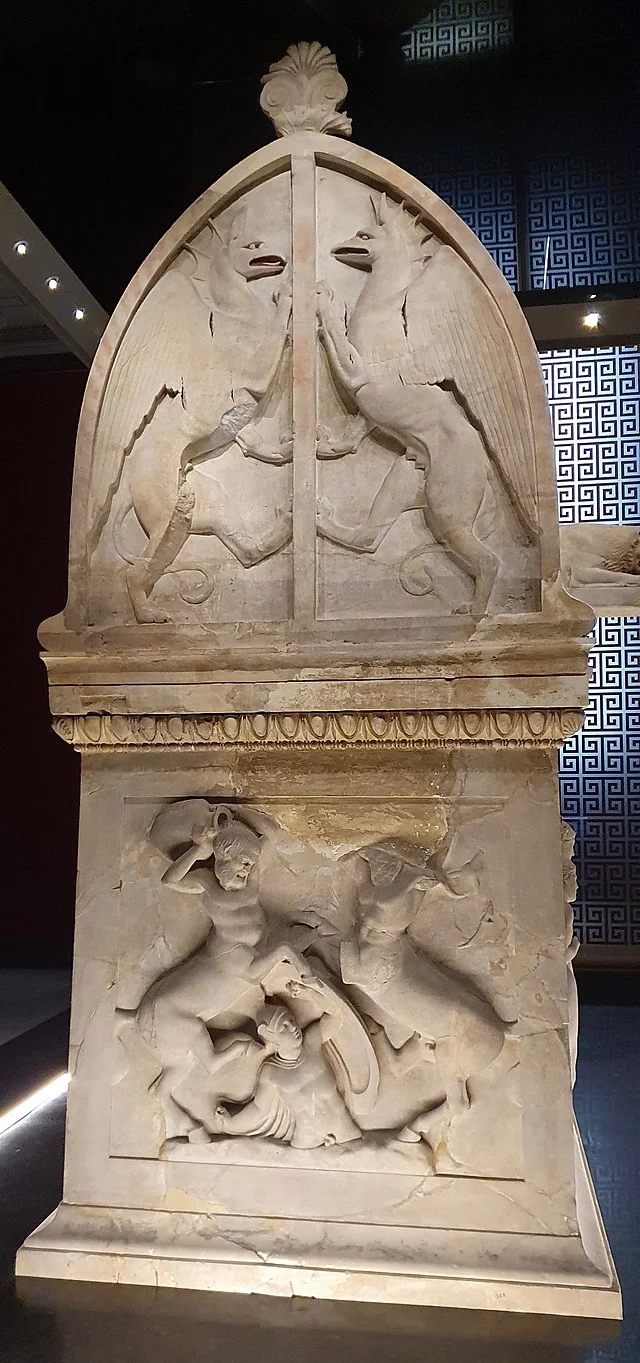The Lycian Sarcophagus of Sidon, dated to the 5th century BC, represents a blend of artistic traditions from Anatolia, Persia, and Greece. Discovered in 1887 in Sidon, Lebanon, this sarcophagus is one of several remarkable finds from the area. It is now displayed at the Istanbul Archaeological Museum.
Get your dose of History via Email
Historical Background
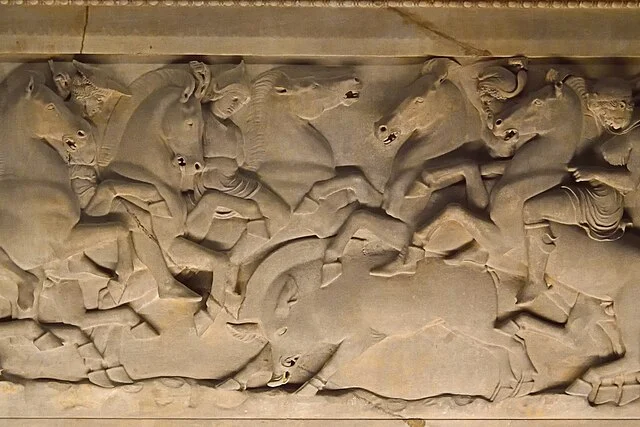
Sidon, a prominent city in Phoenicia (modern-day Lebanon), served as a significant cultural and trade hub throughout the ancient world. Its strategic coastal position enabled it to connect with various empires, making it a melting pot of diverse cultures and artistic influences. The Lycian Sarcophagus, named for its stylistic resemblance to Lycian tombs, reflects these multiple influences. However, historians believe it was locally produced in Sidon rather than imported from Lycia.
Discovery and Excavation
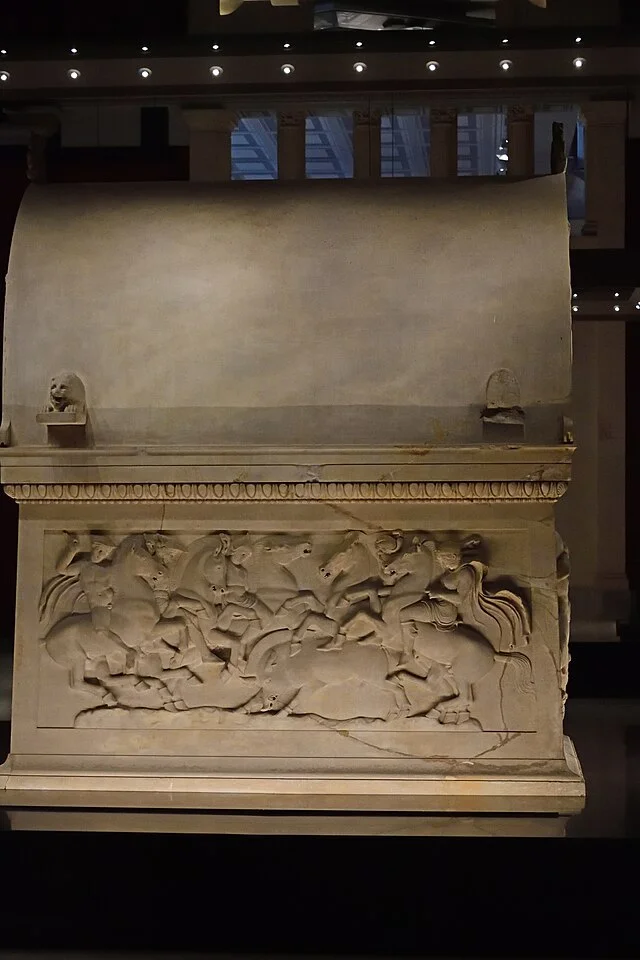
The sarcophagus was found in a royal necropolis near Sidon by Ottoman archaeologist Osman Hamdi Bey. The excavation, which aimed to uncover tombs of the ancient Sidonian elite, yielded an impressive collection of sarcophagi, each with distinct styles and motifs. The Lycian Sarcophagus, in particular, drew attention for its unique artistry and sophisticated craftsmanship.
Artistic Style and Influence
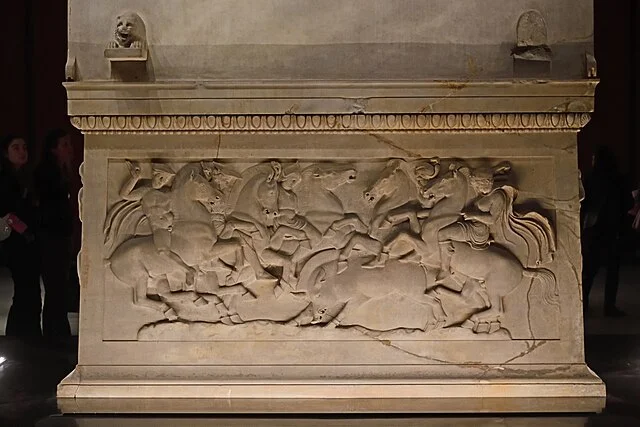
The design of the Lycian Sarcophagus combines influences from several artistic traditions. Its general form, resembling a house or temple with a sloped roof, mirrors the architectural style common in Lycian tombs found in modern southwestern Turkey. However, the depictions on the sarcophagus are not purely Lycian.
The relief carvings show hunting and battle scenes that reflect Persian influence, a result of Sidon’s ties with the Achaemenid Empire during this period. The detailed human figures and fine anatomical features, however, demonstrate the influence of Greek sculptural techniques. These elements together create a visual narrative reflecting the interconnectedness of the Mediterranean and Near Eastern worlds in the 5th century BC.
Iconography and Symbolism
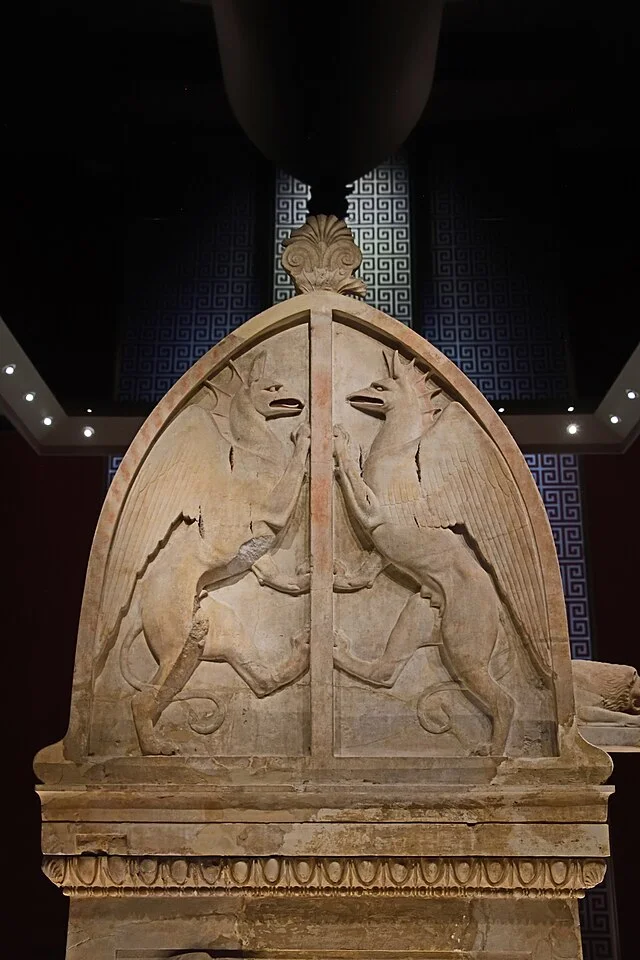
The sarcophagus displays a variety of iconographic elements that convey the deceased’s social status, valor, and connection to the divine. One side features a hunting scene with the deceased riding horseback, a symbol of nobility and bravery. Another side presents a battle scene, showcasing warriors in combat. These scenes symbolize the values of courage, leadership, and protection associated with the deceased.
Each figure is depicted with remarkable attention to detail. Facial expressions and postures convey emotions and intentions, showing Greek influence in the representation of human forms and anatomy. The combination of these elements provides insight into how Sidonian society viewed death, heroism, and the afterlife.
Cultural Significance

The Lycian Sarcophagus is more than a burial artifact; it serves as a historical document reflecting the cultural and political dynamics of the region. Sidon’s connection to the Persian Empire, alongside its exposure to Greek art, positioned the city as a focal point of artistic exchange. The sarcophagus thus embodies the multicultural nature of Sidonian society and the interconnectedness of the ancient Mediterranean world.
Preservation and Legacy
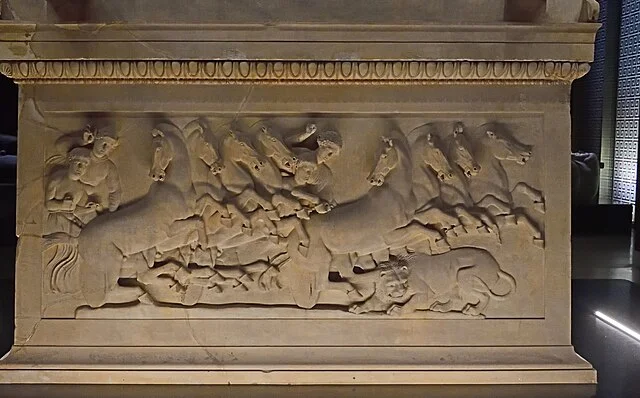
Today, the Lycian Sarcophagus stands as a valuable artifact representing Phoenician, Persian, and Greek interactions. Its preservation in the Istanbul Archaeological Museum allows scholars and the public to appreciate this complex piece of history. By studying the sarcophagus, historians gain a better understanding of the cultural exchanges that shaped the Eastern Mediterranean during the classical period.
The Lycian Sarcophagus of Sidon remains a testament to the artistic, cultural, and social landscapes of 5th century BC Sidon. It highlights the role of Sidon as a crossroads of civilizations and its influence on the art and culture of the ancient world.
Source:

